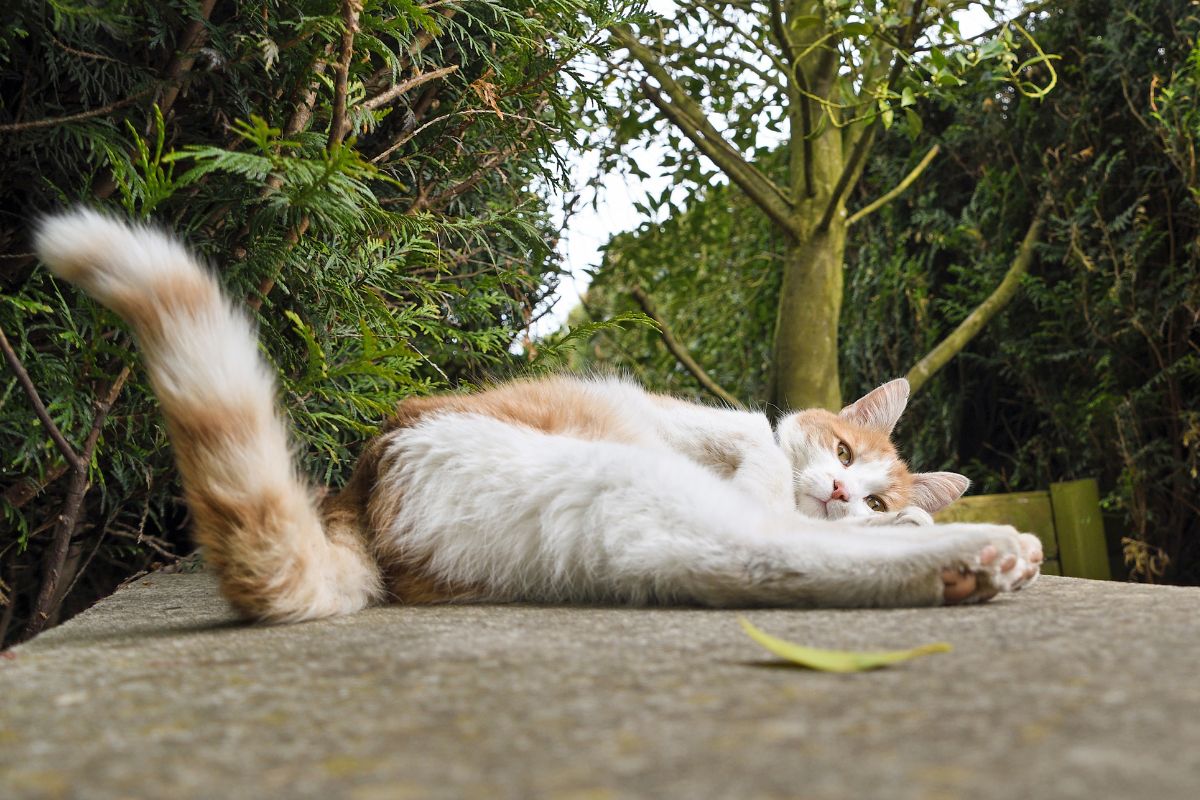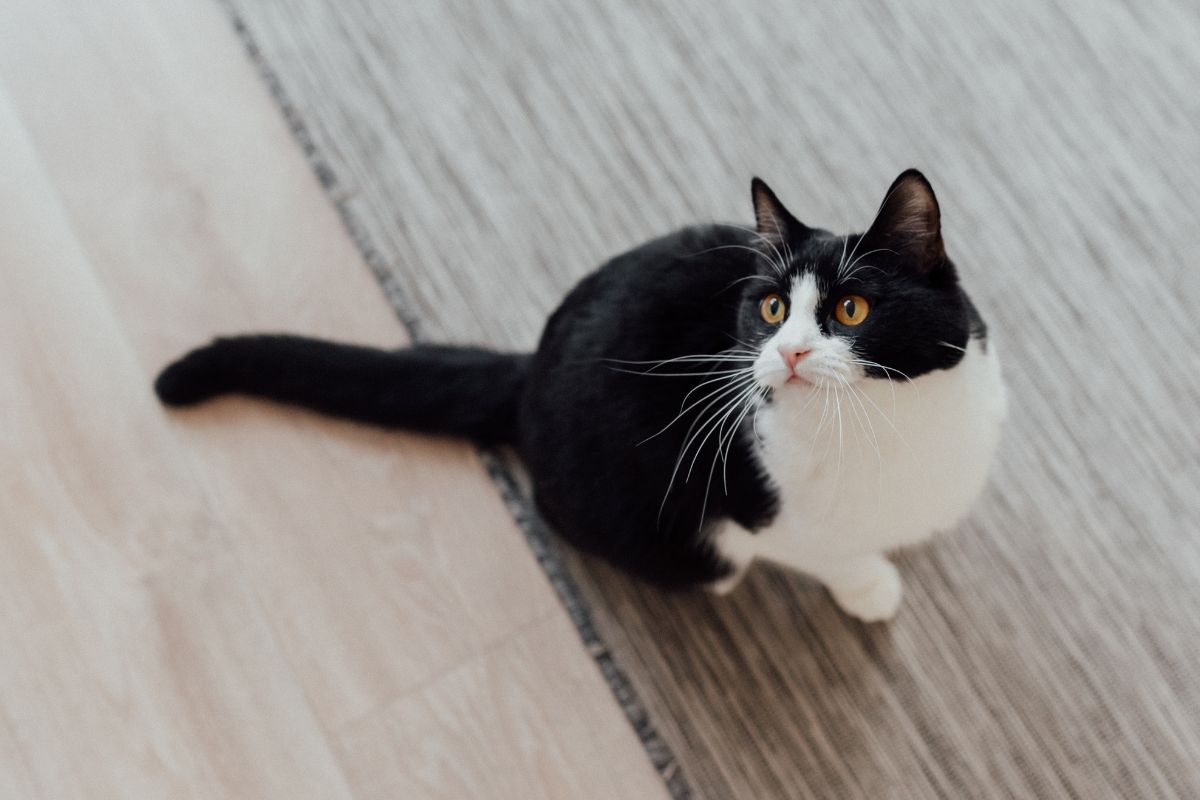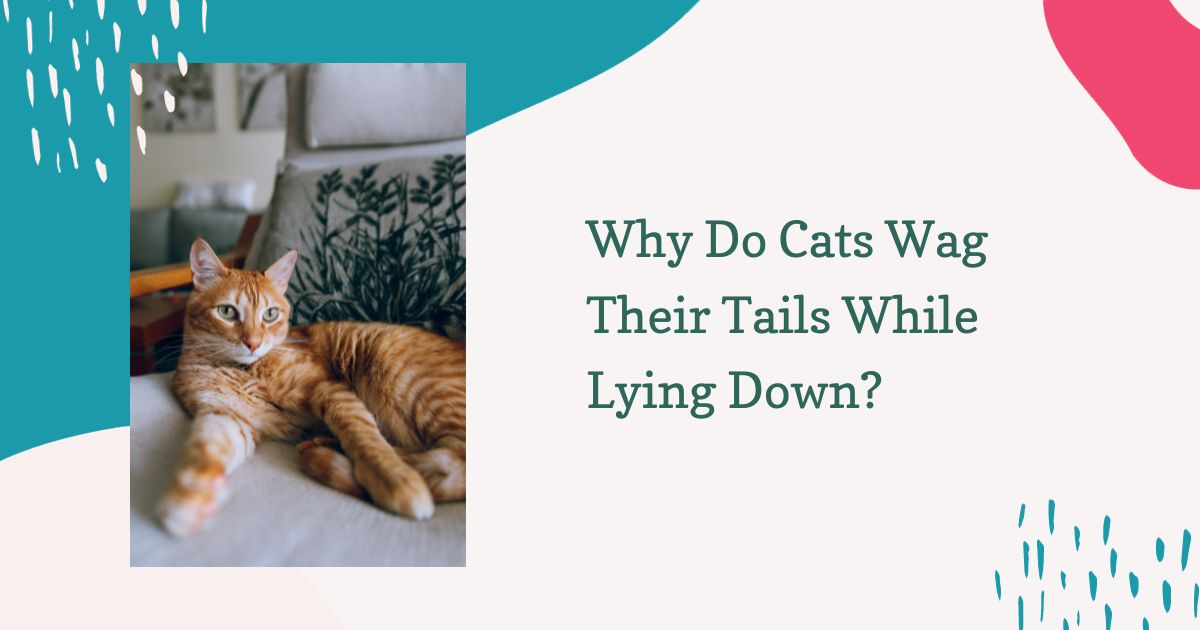Why do cats wag their tails while lying down? Decoding feline body language to better understand your pet’s emotions.
What Does It Mean When A Cat Wags Its Tail?
When a cat wags its tail, it’s communicating a range of emotions. Unlike dogs, for cats, tail wagging often signals irritation, agitation, or excitement. In the context of cats wagging their tail while lying down, it could indicate mild annoyance or contemplation. Always pay attention to other body cues to fully understand your feline friend.

Why Do Cats Wag Their Tails While Lying Down?
Cats use their tails to communicate various emotional states. In this position, tail wagging could signify that your cat is alert but relaxed. Sometimes, it can indicate mild annoyance or even curiosity. Understanding what does cat tail wagging mean helps you decode your pet’s complex emotional language.
Do Cats Wag Their Tails When Happy?
Contrary to popular belief about dogs, cat tail wagging is not usually a sign of happiness. Cats may wag their tails for various reasons, such as irritation, excitement, or even contemplation. It’s a complex form of feline communication that can mean different things depending on the situation.
So, when asking, ‘Do cats wag their tails when happy?’ it’s crucial to look at other body language cues for a complete understanding.

Do Cats Wag Their Tails on Purpose?
Certainly, cats intentionally wag their tails to communicate specific feelings or thoughts. When you see a cat waging a tail tip, it’s a nuanced signal that could indicate anything from curiosity to irritation.
These intentional tail movements serve as an essential aspect of feline communication, allowing you to understand your pet’s emotional landscape better.
Reasons Why Cats Wag Their Tails in Other Scenarios
Cats wag their tails to communicate various emotions, even beyond the commonly discussed scenario of why do cats wag their tails while lying down and purring. In different contexts, a wagging tail can signify excitement, irritation, or even a predatory instinct.
For example, a flicking tail during play suggests engagement, while a lashing tail can indicate growing annoyance. Therefore, tail wagging is a multifaceted form of feline expression that varies by situation.
Different feline tail movements in cats can convey various emotions and intentions. Here are some key types:
- Flicking or Twitching: A light flick or twitch usually signifies mild irritation or concentration, often seen when a cat focuses on a toy or prey.
- Lashing: A vigorously lashing tail indicates heightened emotion, often anger or extreme irritation. This is a clear sign of giving your cat some space.
- Elevated Tail: A tail held high usually signifies a happy, confident cat. This is often seen when cats are exploring new environments.
- Low Tail: A tail held low or tucked between the legs generally indicates fear, submission, or uncertainty.
- Slow Wag: A slow, sweeping wag could signify that the cat is deep in thought or contemplating different forms of action.
- Tip Twitch: A subtle twitch at the tip of the tail can indicate interest or curiosity, often seen when a cat observes something closely.
- Purring and Wagging: This combination, often seen in why cats wag their tails while lying down and purring, is more nuanced and can indicate a state of relaxed alertness.

We’ve Got You Covered
In summary, unraveling the mystery of why do cats wag their tails while lying down is a nuanced undertaking. Tail wagging is a complex language where every flick, twitch, or lash serves a unique communicative purpose.
Whether it signifies irritation, contemplation, or relaxed alertness, wildly when purring, understanding these cues can help solidify the bond between you and your furry companion.
As a pet owner, paying attention to your cat’s tail movements offers invaluable insights into its emotional landscape, enabling you to cater to its specific needs more effectively.

